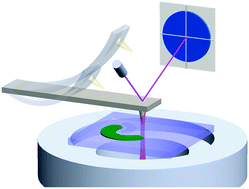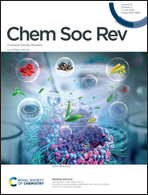Photo-induced force microscopy (PiFM) – principles and implementations
Abstract
Photo-induced force microscopy (PiFM) is a scan probe technique that offers images with spectroscopic contrast at a spatial resolution in the nanometer range. PiFM utilizes the non-propagating, enhanced near field at the apex of a sharp tip to locally induce a polarization in the sample, which in turn produces an additional force acting on the cantilevered tip. This photo-induced force, though in the pN range or less, can be extracted from the oscillation properties of the cantilever, thus enabling the generation of photo-induced force maps. Since its inception in 2010, the PiFM technique has grown into a useful nano-spectrocopic tool that has expanded its reach in terms of imaging capabilities and applications. In this review, we present various technical implementations of the PiFM approach. In addition, we discuss the physical origin of the PiFM signal, highlighting the contributions from dipole–dipole forces as well as forces that derive from photo-thermal processes.

- This article is part of the themed collection: Nanoscale Spectroscopy


 Please wait while we load your content...
Please wait while we load your content...